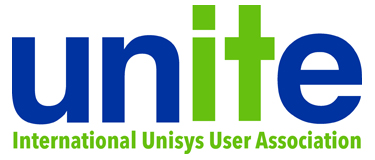With the planned 2Q 2019 availability of Agile Business Suite (AB Suite®) Release 7.0 drawing nearer by the day, we’ve been encouraging the AB Suite user community to take part in a number of beta tests.
In fact, we recently completed the AB Suite 7.0 Beta 4 test. This is always an exciting test, as the Beta 4 software usually includes much of the functionality that will find its way into the final release. Here are some of the key new features users explored during the Beta 4 test.
AB Suite Modes
Each AB Suite model can be configured to use one of several Product Feature Modes. These unique operating modes, which expose specific functionality, have been expanding over the last couple AB Suite releases, and they continue to evolve in AB Suite 7.0.
Based on feedback we received following earlier beta tests, the naming conventions for the Product Feature Modes were updated ahead of the Beta 4 test. The updated mode names and the functionality each includes are now:
- Standard: Core object-oriented features. Available on the run times for ClearPath® MCP and Microsoft Windows®.
- Advanced: Advanced polymorphic features. Available on MCP and Windows, though XML is not supported on the MCP runtime.
- User Experience: Agile Business Suite Client Framework UI features. Available on Windows only.
AB Suite Model
The AB Suite Model redesigned the Class in the Beta 4 test to only represent complex types. As covered in a previous beta test, Primitive types are defined with the new Primitive object. Other notable changes covered during the Beta 4 test include:
- Extract files are defined using the new “File” stereotype, as opposed to inheriting from the
GLB.File - Attribute value-checking logic is available only on Ispec attributes in the presentation
- The model rules and validation regarding where inner classes can be instantiated have been improved, making it easier to reuse these classes
AB Suite Debugger
Beta 4 testers were able to use the new auto configure feature in Debugger, which populates the minimum configuration properties with default values when a debug session is initiated. Once testers started their debug sessions, they were able to modify the default properties in the model’s “Configuration Properties” dialog box.
Testers could also try updated “Watch,” “Local,” and “Auto” windows, all of which have been enhanced with full edit capabilities, as well as the ability to monitor individual cells in an array. The display of large arrays and groups as a single string was moved to the new “Immediate” window, making it an on-demand display. Testers noted this significantly improved performance.
AB Suite Debugger and ATT
Testers were able to play back recorded tests against Debugger for “user experience” project types.
AB Suite Command-Line Builds
As of the Beta 4 test, the command-line utility “Builder.exe” has been retired. All builds from the command line are now made via MS Build. In addition, testers could also build and deploy systems for Debugger using MS Build. To enable this, the Debugger user settings are now stored in a “.user” file in the project directory.
AB Suite on Windows
The Beta 4 test included side-by-side support for the AB Suite on Windows runtime. This allowed users to install release 7.0 alongside other versions of AB Suite on the same machine without any conflicts.
Business Integrator
Because the model files generated by Business Integrator are now compatible with the AB Suite Product Feature Modes, testers could load the respective model files required by each mode.
User Documentation
The Information Center introduced in the Beta 4 test gave users a single, searchable, central access point to all of the release’s key documentation.
